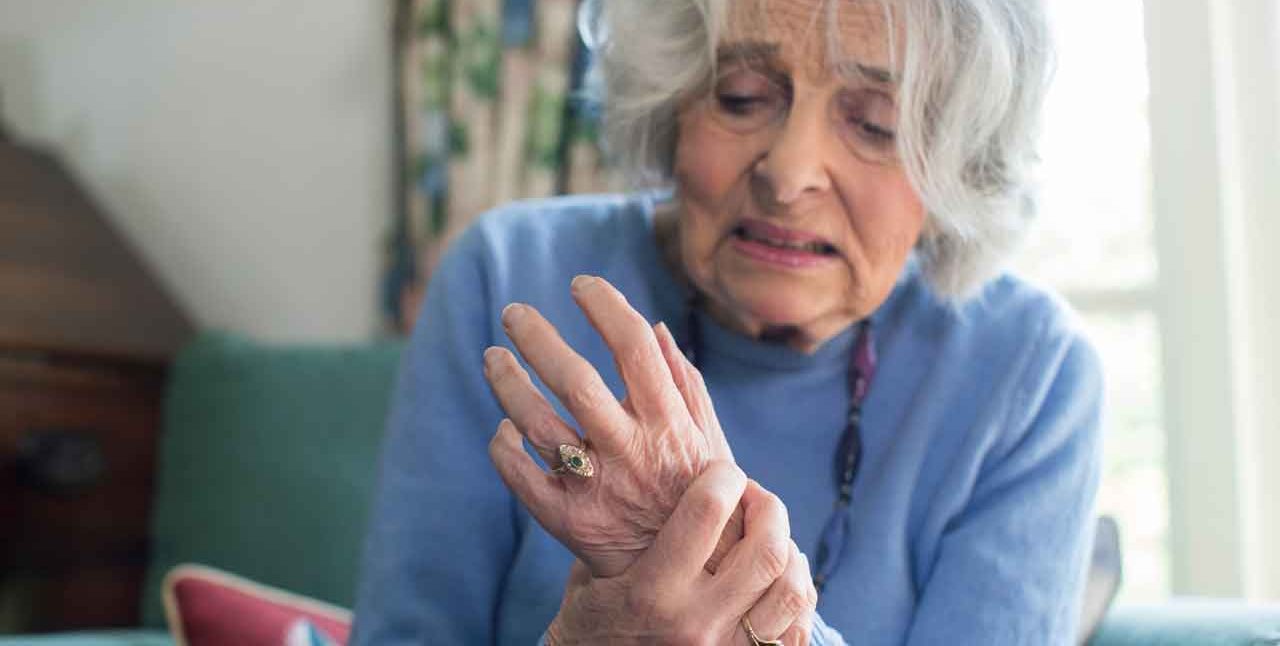Rheumatoid Arthritis Symptoms

Sadness, extreme fatigue, and coughing are common rheumatoid arthritis symptoms that could indicate complications requiring medical care. Learn more.
Worldwide, about 1 percent of the population suffers from rheumatoid arthritis (RA), an autoimmune disease two to three times more common in women than in men. The first signs of rheumatoid arthritis usually appear in mid-to-late adulthood and are often most intense in the morning. Some people have flares and then periods without any RA symptoms. Over time, inflammation can spread to your eyes, lungs, and blood vessels and trigger heart disease and depression.
YOU MIGHT ALSO LIKE: What Is Rheumatoid Arthritis?
Rheumatoid arthritis symptoms
Pain in the joints is the best known of all the signs of rheumatoid arthritis. Your joint may be warm, achy, stiff or tender if you touch it. Most often you first feel rheumatoid arthritis symptoms in small joints in your hands and feet. Later on, you may feel it in your shoulders, knees, or hips.
The immune system triggers inflammation in the membrane that lines your joints, called the synovium. In severe cases, the inflammation damages bone, cartilage, and other tissues.
Typically, both sides of your body are affected. If one joint is much more painful or swollen than other affected joints, it might be infected. Tell your rheumatologist!
Fatigue is standard. However, if your joints are less stiff after treatment but you’re still tired and in pain, you may have developed depression and need more support than you can get from your friends and family.
The inflammation in your joints can spread to your lungs. You may be short of breath, or you might find yourself coughing — all common signs of rheumatoid arthritis. If you cough for longer than a week, especially if you have a fever, you could have an infection in your lungs. Get that cough checked out because you could develop interstitial lung disease.
You are sadly also more likely to develop heart disease, so you need to be extra careful about maintaining a healthy weight and managing your cholesterol and blood pressure. Check out any instances of chest pain.
In the past, balance issues and numbness — caused by inflammation in the spine — were more common than they are today. If you do experience those RA symptoms, tell your doctor, and you might want to check your blood sugar levels. People with this illness are more likely to develop type 2 diabetes so you may have diabetic nerve damage, another one of the unexpected rheumatoid arthritis symptoms. A skin rash could be a drug reaction or a sign that the disease has spread.
Red eyes, painful eyes, and blurry vision may all arise from inflammation in your eye. Your retina may become detached and, without immediate treatment, you might lose your vision.
You might develop rheumatoid nodules, firm lumps of noncancerous tissue.
Is rheumatoid arthritis hereditary?
Like many illnesses, rheumatoid arthritis arises from a combination of genetic and environmental influences, many still unknown. The genetic factors seem to account for about 60 percent of your risk.
Variations in dozens of genes contribute, but one area is most important: The human leukocyte antigen (HLA) genes, especially the HLA-DRB1 gene, which produce proteins that help the immune system distinguish your own proteins from proteins made by viruses and bacteria. In short, a faulty gene can lead your body to mistake your own joint membrane as foreign.
But non-genetic factors play a role in triggering RA symptoms. These include hormonal shifts, infections, long term smoking, and work exposure to certain dusts and fibers.
Updated:
March 19, 2020
Reviewed By:
Janet O’Dell, RN